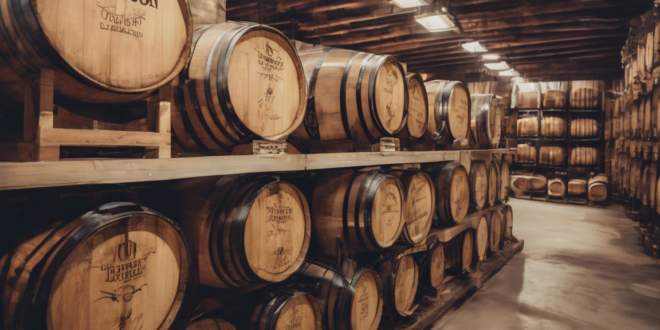Bourbon Distillery Challenges Proposed Nutrition Labeling Regulations: A Deep Dive into Industry Controversy
The bourbon industry is currently embroiled in a heated debate over proposed nutrition labeling requirements that could fundamentally transform how alcoholic beverages are marketed and presented to consumers. At the heart of this controversy is a significant pushback from prominent bourbon distilleries against what they perceive as overly restrictive and potentially damaging regulatory measures.
The Proposed Nutrition Labeling Mandate: What’s at Stake?
The Alcohol and Tobacco Tax and Trade Bureau (TTB) has put forward a comprehensive nutrition labeling proposal that would require bourbon manufacturers to provide detailed nutritional information directly on their product packaging. This unprecedented move has sent shockwaves through the traditional bourbon industry, which has long maintained a more minimalist approach to product labeling.
Key Components of the Proposed Regulations
The proposed regulations would mandate that bourbon producers include:
• Calorie count per serving
• Alcohol by volume (ABV) percentage
• Carbohydrate content
• Potential allergen information
• Serving size recommendations
Industry Pushback: Preserving Bourbon’s Traditional Identity
Bourbon distilleries argue that these proposed regulations fundamentally misunderstand the cultural and historical significance of their product. Many traditional bourbon producers view these labeling requirements as a potential threat to the artisanal and heritage-driven narrative that has long defined American bourbon.
Economic Implications for Craft Distilleries
Small and medium-sized bourbon producers are particularly concerned about the financial burden imposed by these new labeling requirements. The costs associated with redesigning packaging, conducting nutritional analysis, and implementing new production protocols could be devastating for smaller craft distilleries operating on thin profit margins.
Consumer Perspective: Information vs. Marketing Appeal
While regulators argue that these labels will provide consumers with valuable nutritional information, bourbon enthusiasts and industry experts suggest that such detailed labeling might actually detract from the premium experience associated with high-end bourbon consumption.
Potential Nutritional Complexities of Bourbon
Bourbon, by its nature, presents unique challenges for standardized nutrition labeling. As a distilled spirit with minimal additional ingredients, the nutritional content can vary significantly based on factors like aging process, barrel selection, and specific production techniques.
Technical Challenges in Nutrition Labeling
Distilleries have highlighted several technical obstacles in implementing comprehensive nutrition labeling:
• Variability in production batches
• Complex chemical compositions
• Lack of standardized testing methodologies
• Significant costs of comprehensive nutritional analysis
Historical Context of Alcohol Labeling Regulations
The current controversy is part of a broader historical trend of increasing transparency in food and beverage labeling. Previous regulatory changes have transformed packaging requirements across various industries, setting precedents that now potentially extend to distilled spirits.
Legal and Regulatory Landscape
The proposed regulations sit at the intersection of consumer protection, industry tradition, and federal regulatory authority. Bourbon producers are carefully navigating this complex legal terrain, preparing potential legal challenges and collaborative negotiations with regulatory bodies.
Potential Compromise Solutions
Industry leaders are exploring potential compromise approaches that might satisfy regulatory concerns while preserving the aesthetic and cultural integrity of bourbon packaging. These could include:
• Voluntary nutrition information
• Digital QR code nutrition links
• Standardized industry-wide reporting methods
International Perspectives on Alcohol Labeling
The debate extends beyond American borders, with international spirits markets watching closely. Different countries have varying approaches to alcohol labeling, providing potential models for balanced regulatory frameworks.
Consumer Education and Transparency
While resisting mandatory labeling, many bourbon producers acknowledge the growing consumer demand for transparency. The industry is increasingly recognizing the need to balance traditional marketing approaches with modern informational expectations.
Future Outlook: Adaptation and Innovation
Regardless of the immediate outcome, the current regulatory discussions are likely to drive innovation in packaging, marketing, and production transparency within the bourbon industry. Forward-thinking distilleries are viewing this challenge as an opportunity for differentiation and consumer engagement.
Conclusion: A Pivotal Moment for Bourbon Production
The ongoing debate surrounding nutrition labeling represents more than a mere regulatory challenge. It symbolizes a broader conversation about tradition, innovation, consumer rights, and the evolving identity of American bourbon in the 21st century.
As the industry continues to dialogue with regulatory bodies, one thing remains clear: the passion and commitment to preserving bourbon’s rich heritage will remain at the forefront of these discussions.
 Good Calories Guide GoodCalories Guide focuses on nutrition, healthy eating, and overall wellness. The site offers practical insights into evidence-based dietary practices, including tips for specific lifestyles such as veganism, keto, and family-friendly meal planning. It also addresses unique nutritional needs for individuals with conditions like diabetes or food allergies, while providing quick and accessible recipes to make healthy living a sustainable and enjoyable choice.
Good Calories Guide GoodCalories Guide focuses on nutrition, healthy eating, and overall wellness. The site offers practical insights into evidence-based dietary practices, including tips for specific lifestyles such as veganism, keto, and family-friendly meal planning. It also addresses unique nutritional needs for individuals with conditions like diabetes or food allergies, while providing quick and accessible recipes to make healthy living a sustainable and enjoyable choice.


